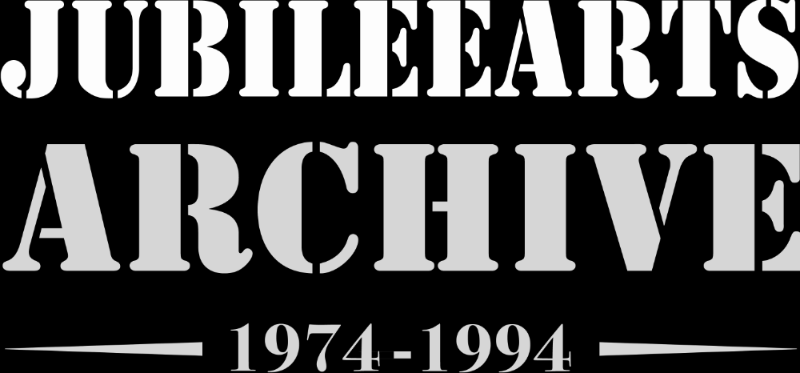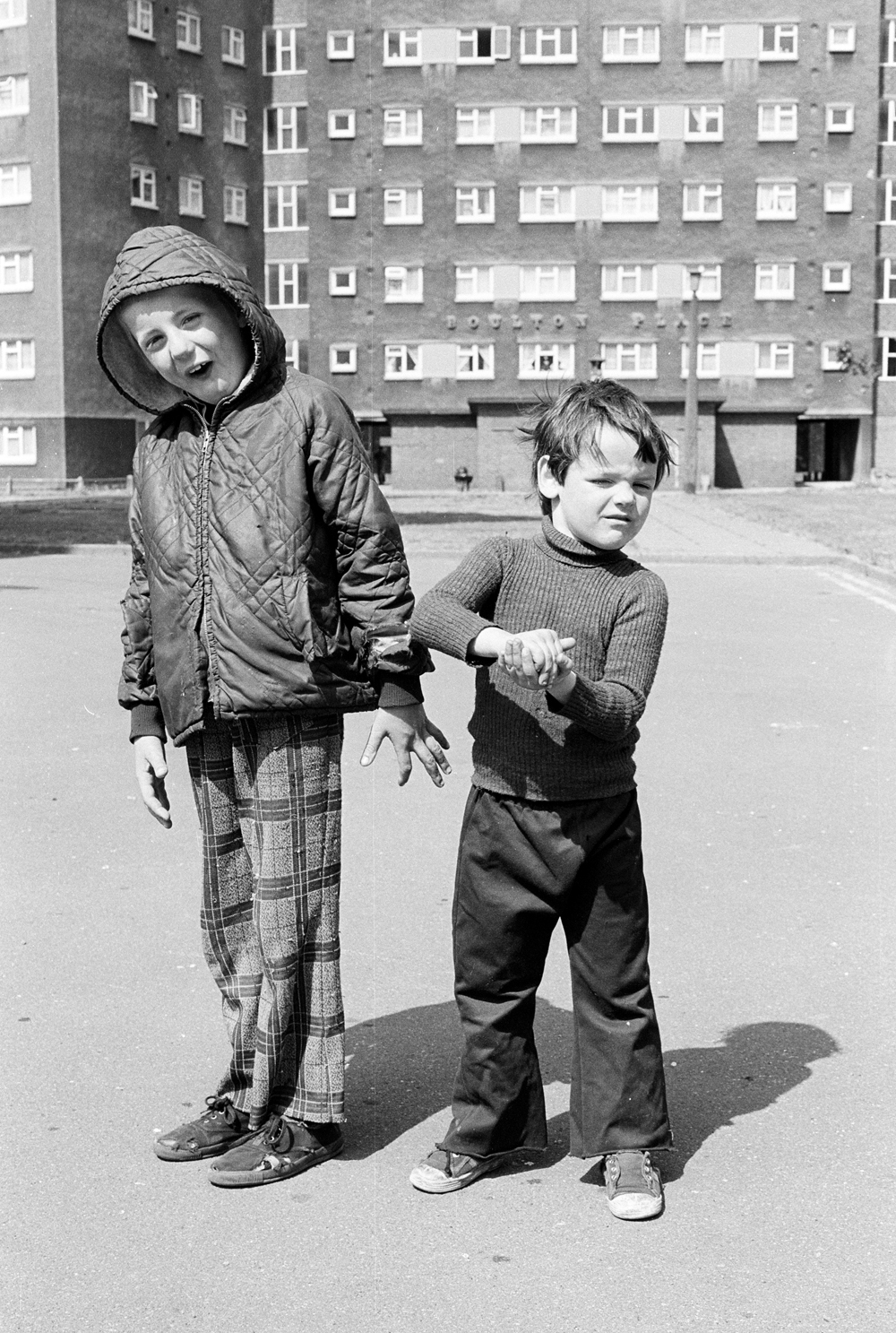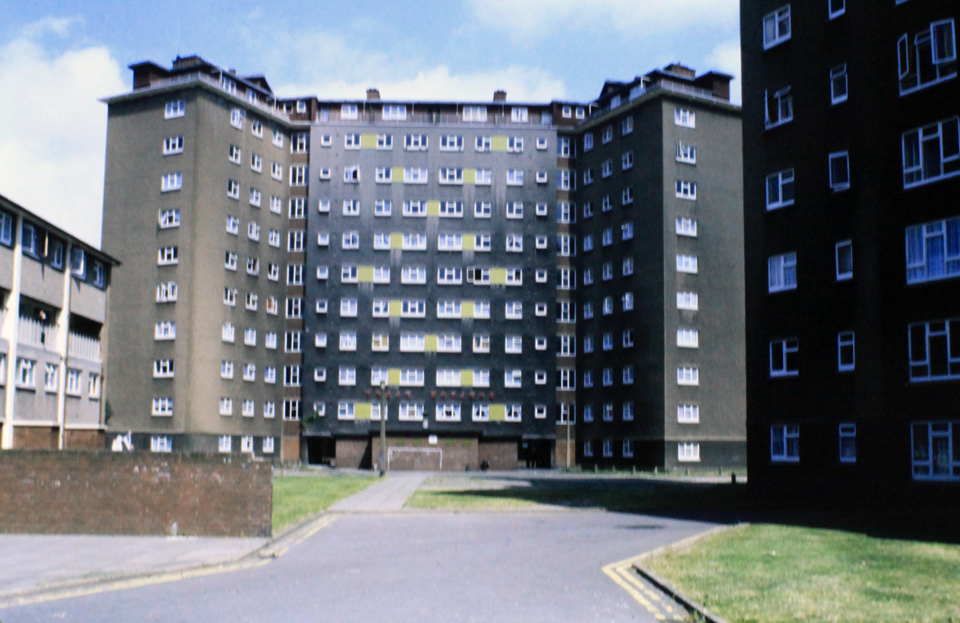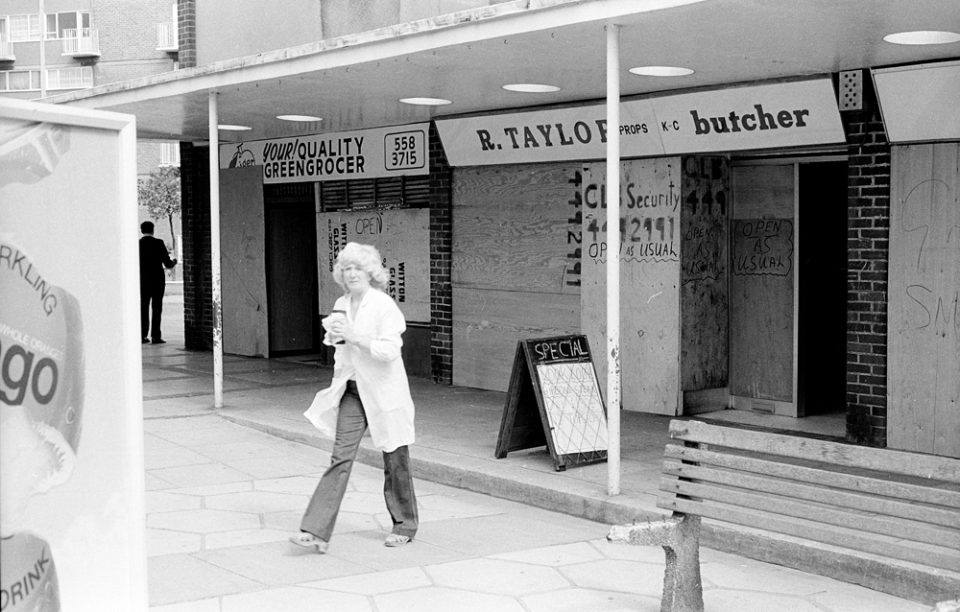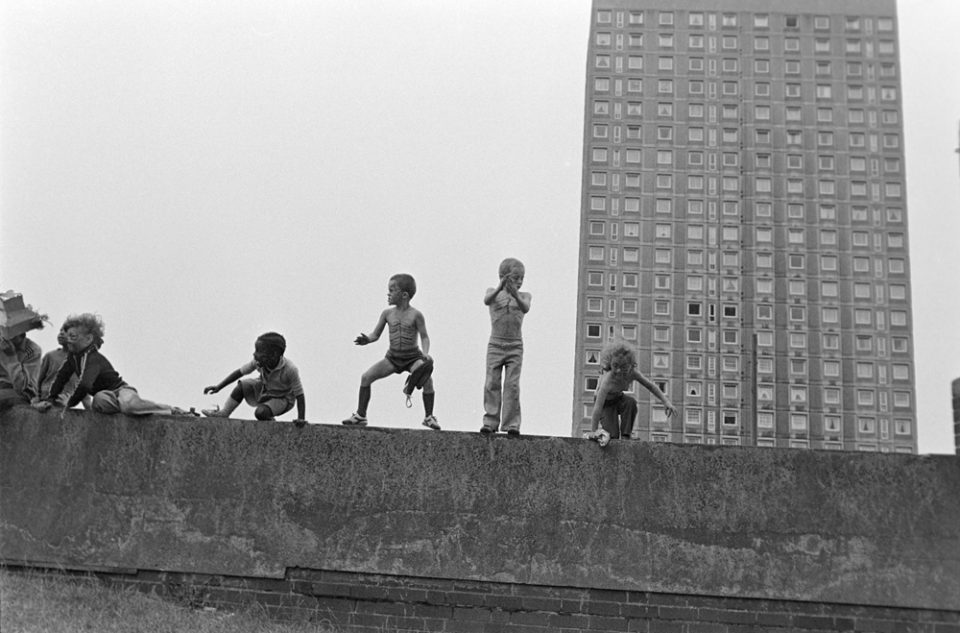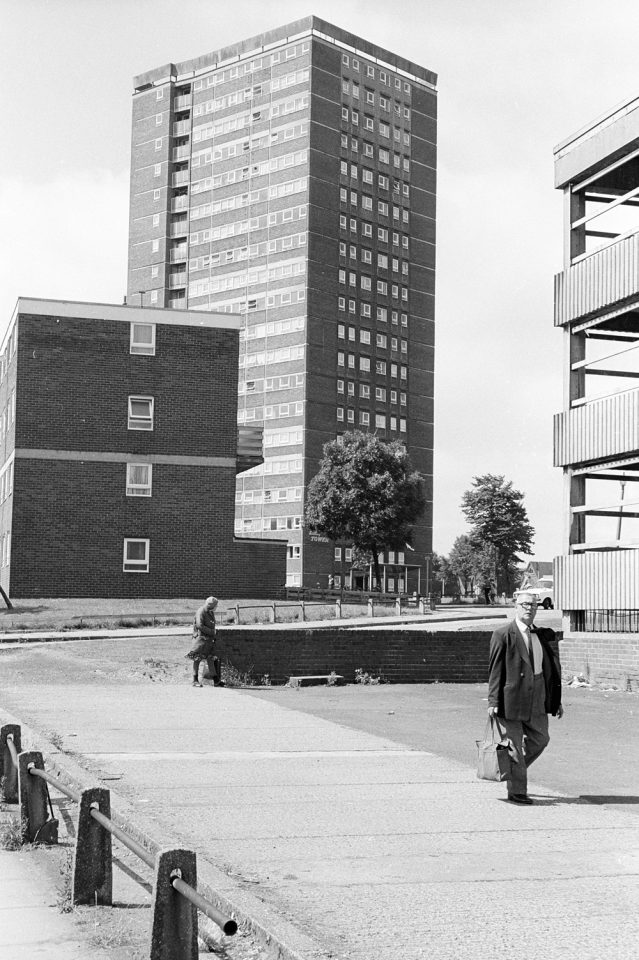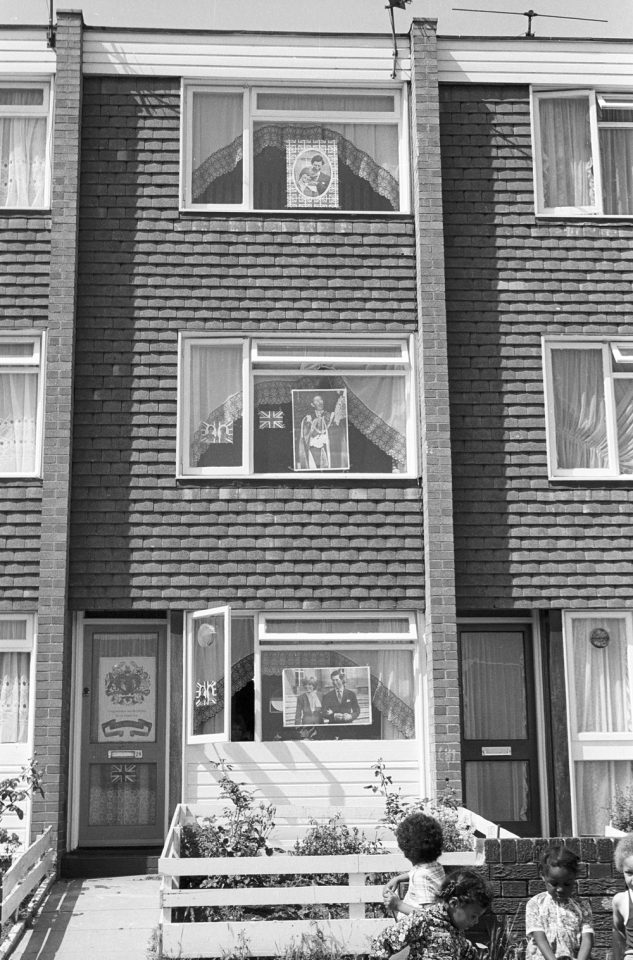The power of an image sometimes lies in familiarity, reminding us of our past life, of a particular place and time long gone. Or perhaps these youngsters might remind you of modern versions of Dickensian street urchins, even though they are pictured more than a century after the writer visited the area. Dickens described the Black Country as a ‘cheerless region’ where ‘tall chimneys, crowding on each other and presenting that endless repetition of the same, dull, ugly form poured out their plague of smoke, obscured the light, and made foul the melancholy air.’ You might notice that one of the children has no laces in his pumps, and his trousers look home made, if not hand me downs. ‘Make do and mend’, a government campaign in World War Two, still held true here.
They pose for the camera outside Boulton Place. Along with Murdoch Place, these were two 11-storey tower blocks in Smethwick containing 128 dwellings, named after two notable local manufacturers. Built in 1956, the flats had open coal fires and at first were considered ‘the bee’s knees’ by many. Situated on a small hilltop, they commanded fine views across the Black Country and Birmingham; as the tallest residential buildings in the area, they were landmarks in themselves. Described as ‘exclusive… they’re almost Mayfair…’ the local paper also says: ‘These 11 storey flats are the last word in modernity… The lift – there’s one at each end of the block – is decorated with corrugated aluminium. You work it yourself and green lights flash to indicate which floor you are passing. This week youngsters with a mechanical turn of mind were operating it for the benefit of incoming tenants. The lift goes to the top floor but one. Sun balconies look out on a view over the smoke-pall of Smethwick that extends for miles.’
By 1964, more than half of all council housing built in the UK were flats of this nature; in that year alone 28 blocks were completed in the Black Country and another 25 received planning permission. The government’s Housing Subsidies Act of 1956 allowed for generous financial support to local authorities for new houses to be built as part of slum clearance schemes and then even greater funds made available for building blocks more than 6 storeys high. But by the 1970s a lack of maintenance, persistent damp problems, vandalism, arson and rubbish dumping led Boulton and Murdoch Place to be described as the ‘two worst blocks in Sandwell’, their lifts out of order more often than not. Only a few years after this photograph was taken, a council housing committee report called them a ‘desolate eyesore on the landscape’ and they were finally turned to rubble in 1988. By the end of the century 37 tower blocks in the Black Country were demolished, most of them in Sandwell.
These particular two tower blocks became grim environments, in a locality in rough shape from years of decay, slum clearance and de-industrialisation. Poverty was acute. They were not originally intended to house young children but by 1978 there were 235 youngsters living here. What open spaces existed were mostly concreted over, where these kids were hanging out, bound by dual carriageways and arterial roads, railway lines and canals and factory sites. These were the types of locations chosen by Jubilee Arts to ply their trade.
Marianne Munro, interviewed by the Living Memory project, recalled: “If you ask people about those blocks – Boulton and Murdock Place – people would say to you that there were a lot of rough kids living there. But actually, people looked after each other. Parents, whether they be white, black or whatever, parents would either be going out to work most of the time. So you’d end up with people coming together on the play equipment in the middle of the estate, although the play equipment was rubbish at the time it looked like it was really good. People would come together and play. And you’d be out all day. Either there’s nothing to do in your house or you hadn’t got anything to eat, but there were no boundaries between people because there everybody was the same… I think there was a bad name to those blocks from the beginning. We didn’t know at the time but if you lived in Murdock and Boulton place you were the lowest of the low. But people just mixed. People just played together, and there was no childcare. You went out of your house from early in the day, and you were making the most of it. You would be mixing with different people playing and talking, just making games.”
